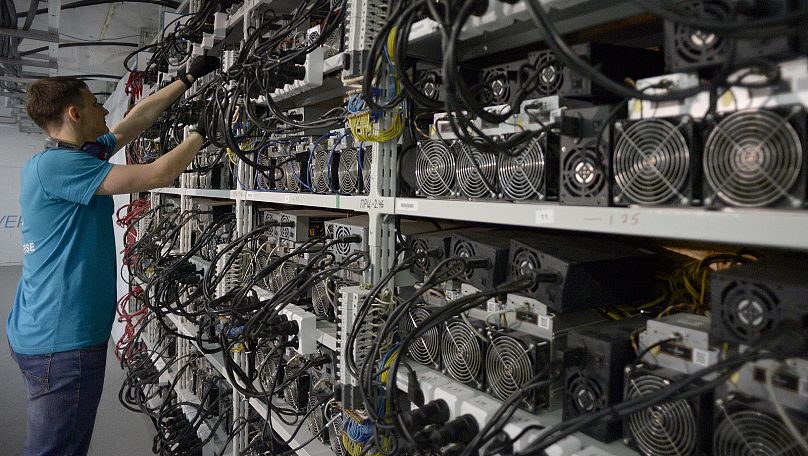What's the difference between altcoins and stablecoins? What's hashing and mining? Sometimes the jargon around cryptocurrencies can make your head spin. Here's how to make sense of it all.
As with any new technology, cryptocurrency comes with its own jargon. For the uninitiated, this can be confusing, even intimidating, at first glance.
If you’re looking to buy, invest or trade in cryptos, a grasp of the most commonly used terms will go a long way to help you understand how blockchain and cryptocurrencies work.
Here are just some of the key terms you will come across:
Bitcoin
Bitcoin was invented in 2008 by a mysterious person or group named Satoshi Nakamoto. While it is now one of thousands of cryptocurrencies, it continues to hog the limelight as the first ever crypto.
Altcoin
"Alt" being short for alternative, altcoin is a term which applies to cryptocurrencies that aren’t Bitcoin and which followed in the wake of its launch.
Stablecoin
While Bitcoin and other altcoins are decentralised, stablecoins are pegged to something else of value, be it an existing currency like the US dollar, or a commodity, in order to make them less volatile.
Ethereum
Ethereum is an open-source, blockchain-based software platform that has its own cryptocurrency called ether. Much like Bitcoin, there are terms that are specific to dealing with Ethereum, including Solidarity, a coding language invented by the platform which is similar to JavaScript.
Non-fungible token (NFT)
While cryptos are fungible, meaning they can be exchanged on a one-to-one basis, NFTs are not interchangeable as they are of different values. NFTs are a form of cryptocurrency which hold assets like music and art rather than money.
Cryptography
The study of secure communications in which the sender and recipient are the only ones who are able to see a message. It’s the basis for blockchain technology used in cryptocurrency transactions.
Fiat currency
Fiat currencies are ones that are issued by governments or banks, but are not backed by a commodity, such as gold. Most modern paper currencies we use today are fiat currencies.
Commodity currency
Unlike fiat currencies, commodity currencies are linked to commodities such as gold, and fluctuate based on the world market value of those products or materials.
Decentralised finance
Also known as DeFi, decentralised finance is the notion that crypto entrepreneurs can recreate a financial system outside the control of the government and traditional financial institutions like banks and brokerages using blockchain technology.
Blockchain
A block is one record of transaction data. Once a transaction is completed, it goes into the blockchain, which is a network of blocks that act as a public ledger that keeps a record of transactions, much as a bank would.
For every transaction, a new block is generated and added to the blockchain. Each block contains a mathematical puzzle with a unique answer which needs to be solved before it can be added to the blockchain. The more blocks that are added, the more secure the blockchain becomes.
Hashing
Hashing is the process of using a function or algorithm to encrypt and decrypt the data in each block. The hash code - or simply hash - can be used as a way of narrowing down the search for data when trying to validate each new block, known as mining.
Mining
The process of finding new coins and validating them for rewards, mining involves supercomputers to unlock blocks by solving - or "hashing" - the complicated mathematical puzzles within each one.
Mining rig
A rig is a computer specifically designed and used to mine for blocks.
Public key
This is the publicly available code that you share with people to receive cryptocurrency into your account.
Private key
This is the confidential code which you use to access your wallet where your cryptos are stored. Only you should have access to this. If someone else finds this key, your stored cryptos are vulnerable to theft.
Whale
As the name suggests, whales are players in the cryptocurrency pond who own large amounts of cryptos. By moving large amounts of cryptos in a sale or purchase, whales have the ability to significantly impact the market, so traders try to keep track of their activities.
Wallet
As with other terms, this is borrowed from our everyday financial vocabulary. Just as with fiat currencies, cryptos are stored in a virtual wallet to keep them safe.
Cold storage
Often regarded as more secure than a wallet, cold storage entails storing bitcoins offline in a device known as a hardware wallet. Owners tend to use both - a wallet for regular spending and cold storage for savings.
Paper wallet
A form of cold storage, a paper wallet is the printed version of your public and private keys on paper in the form of QR codes.
Satoshi or "sat"
As with physical currencies, Bitcoin comes in denominations. A Satoshi - named after Bitcoin’s creator - is the smallest denomination of this particular crypto, equating to 100 billionth of one Bitcoin.












